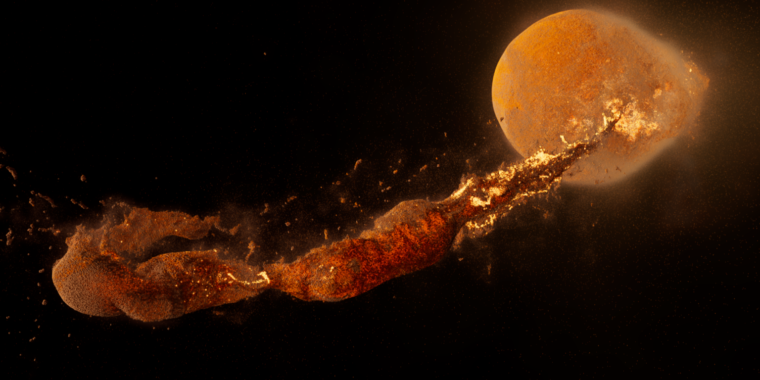This is the best summary I could come up with:
Seismic waves created by earthquakes as they travel through the planet’s interior change speed and direction as they move through different materials.
Things like rock type, density, and temperature all alter the travel of these waves, allowing scientists to gradually build up a picture of the Earth’s crust and mantle, spotting things like the rise of plumes of hot mantle material, as well as the colder remains of tectonic plates that dropped off the surface of the Earth long ago.
Now, a team of scientists has tied the two regions’ existence back to a catastrophic event that happened early in our Solar System’s history: a giant collision with a Mars-sized planet that ultimately created our Moon.
But that material should have been thoroughly churned up when a Mars-sized object, which has picked up the name Theia, smashed into the early Earth, leaving enough debris in orbit to form the Moon.
When sampled, the ratios of isotopes in gasses trapped in this material look like those that were expected to be present in the early years of the Solar System, and not like those found in the crust today.
The big problem with this idea is that the material from Theia would also have been churned up in the wake of the collision, so it’s hard to understand how it could form discrete layers inside the Earth.
The original article contains 505 words, the summary contains 226 words. Saved 55%. I’m a bot and I’m open source!
The big problem with this idea is that the material from Theia would also have been churned up in the wake of the collision, so it’s hard to understand how it could form discrete layers inside the Earth.
Don’t care. This is too awesome to be denied by mere facts and physics.


